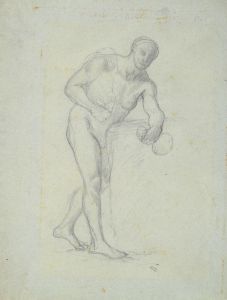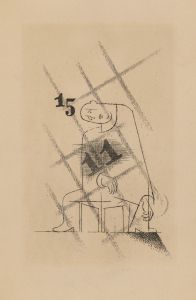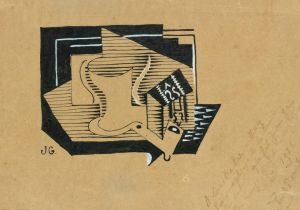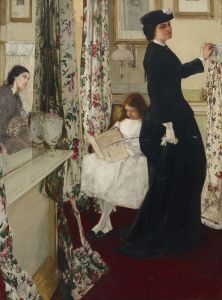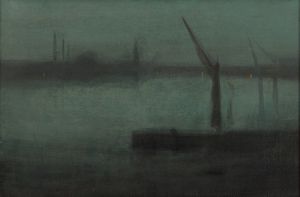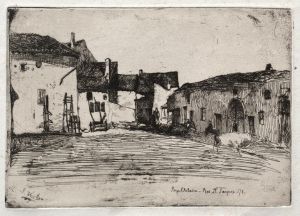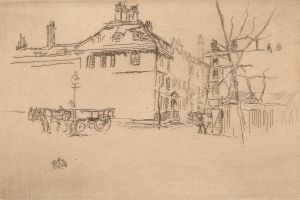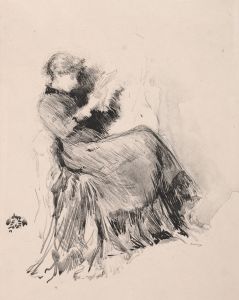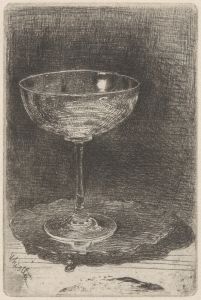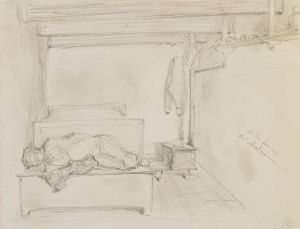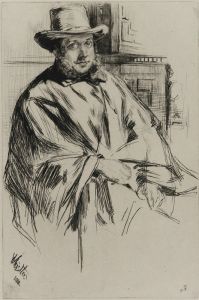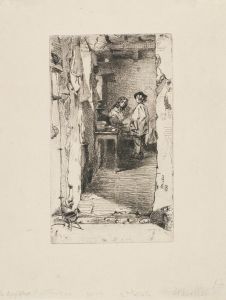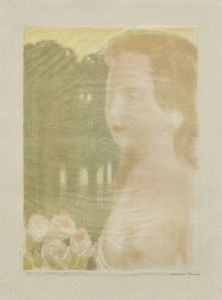
An Orange Note: Sweet Shop
A hand-painted replica of James Abbott McNeill Whistler’s masterpiece An Orange Note: Sweet Shop, meticulously crafted by professional artists to capture the true essence of the original. Each piece is created with museum-quality canvas and rare mineral pigments, carefully painted by experienced artists with delicate brushstrokes and rich, layered colors to perfectly recreate the texture of the original artwork. Unlike machine-printed reproductions, this hand-painted version brings the painting to life, infused with the artist’s emotions and skill in every stroke. Whether for personal collection or home decoration, it instantly elevates the artistic atmosphere of any space.
James Abbott McNeill Whistler was an American artist known for his significant contributions to the art world during the late 19th century. He is best remembered for his paintings, etchings, and lithographs, which often emphasized mood and atmosphere over detailed representation. Whistler's work was influential in the development of the Aesthetic Movement, which advocated for "art for art's sake."
"An Orange Note: Sweet Shop" is one of Whistler's lesser-known works. Unfortunately, there is limited information available about this specific painting, as it does not hold the same prominence as some of his other works, such as "Arrangement in Grey and Black No.1" (commonly known as "Whistler's Mother"). Whistler's oeuvre is characterized by his use of color and his ability to capture the subtle nuances of light and shadow, often drawing inspiration from the Impressionist movement, which was gaining traction during his time.
Whistler was born in Lowell, Massachusetts, in 1834 and spent much of his early life in Europe. He studied art in Paris, where he was influenced by the Realist painter Gustave Courbet and the burgeoning Impressionist movement. Whistler's style evolved over the years, and he became known for his distinctive approach to composition and color harmony. His works often featured a limited color palette and were marked by their tonal subtlety.
Throughout his career, Whistler was known for his innovative approach to art and his sometimes controversial opinions. He famously engaged in a legal battle with the art critic John Ruskin, who had disparaged Whistler's work. The trial, which Whistler won, was a landmark case in the art world and highlighted the tensions between traditional and modern approaches to art.
Whistler's influence extended beyond his paintings. He was a key figure in the Aesthetic Movement, which emphasized beauty and visual pleasure over narrative content or moral messages. This movement was part of a broader cultural shift towards modernism, which sought to break away from the conventions of the past and explore new forms of expression.
Despite the lack of detailed information about "An Orange Note: Sweet Shop," it can be inferred that the painting likely reflects Whistler's interest in capturing the essence of a scene through color and composition. His works often convey a sense of harmony and balance, achieved through careful attention to the interplay of light and shadow.
Whistler's legacy is evident in the continued appreciation of his work and his influence on subsequent generations of artists. His emphasis on mood and atmosphere, as well as his commitment to the idea of "art for art's sake," paved the way for future developments in modern art. While "An Orange Note: Sweet Shop" may not be as widely recognized as some of his other pieces, it remains a testament to Whistler's skill and his enduring impact on the art world.





